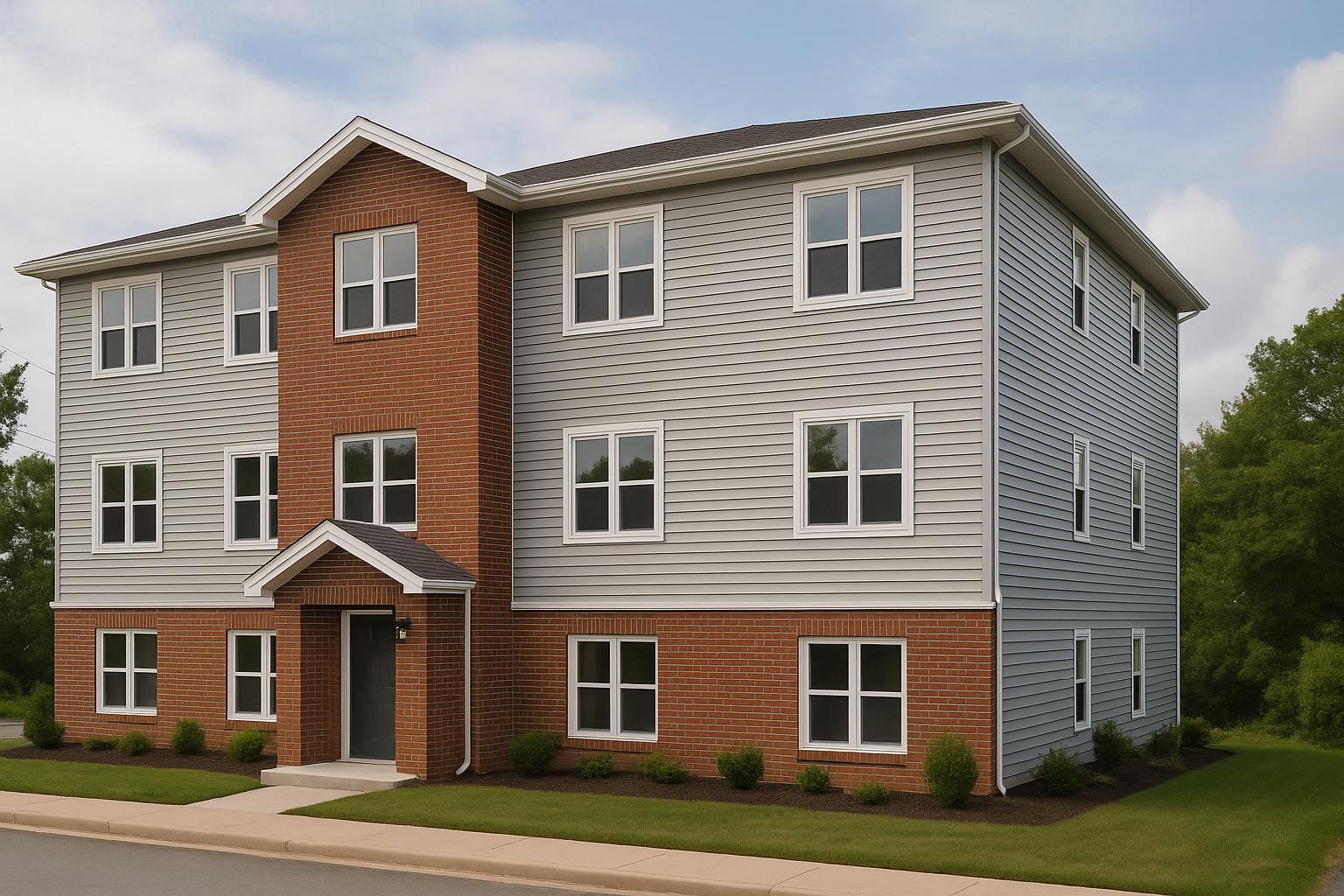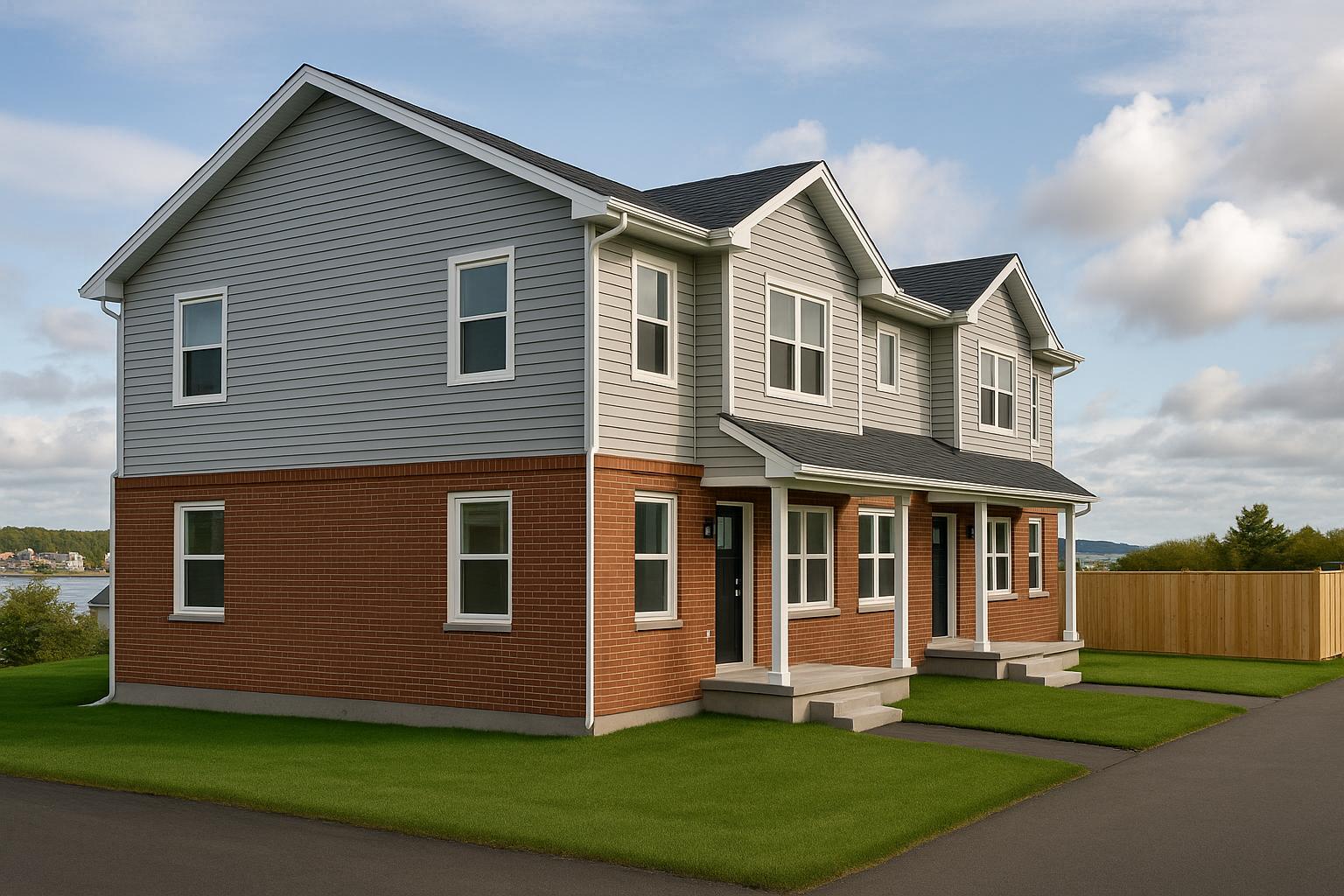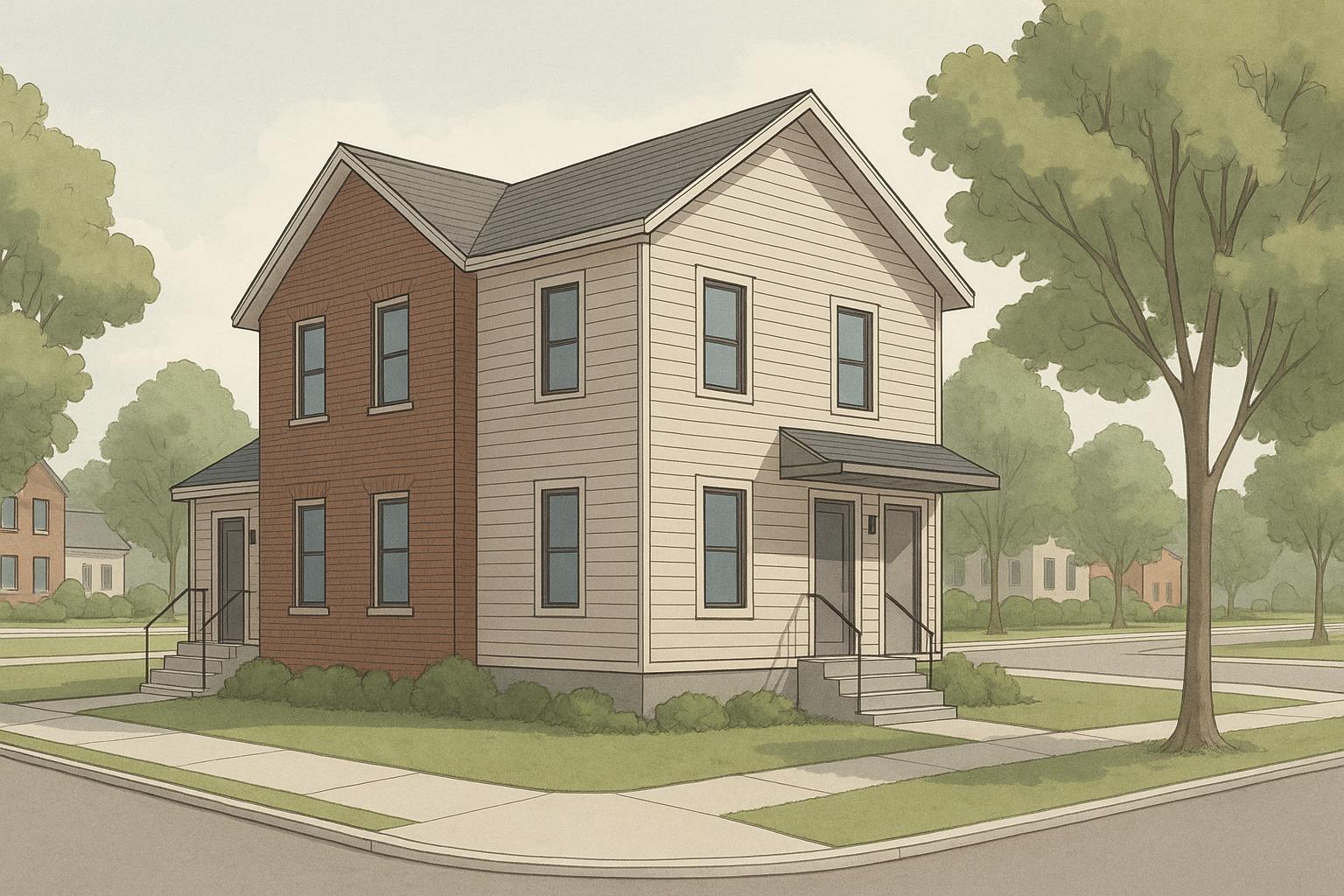CEN-2 zoning in Nova Scotia allows developers to build higher-density, mixed-use properties in exchange for contributing to public benefits. These contributions, calculated based on a project’s excess floor area, are split between affordable housing (60%) and other community initiatives (40%). Developers can negotiate flexible options for these contributions, such as cash payments or direct improvements, to align with municipal goals while managing project costs. Proper planning, accurate calculations, and experienced teams are critical to avoiding delays and maximizing project success.
Key points:
- Eligibility: Properties must align with high-density planning goals and meet location criteria.
- Contributions: Calculated using a formula based on floor area exceeding 2,000 m² and local bonus rates.
- Affordable Housing: 60% of contributions go toward housing initiatives.
- Flexibility: Remaining 40% can fund public amenities like parks or transit.
- Negotiations: Tailor proposals to municipal priorities for smoother approvals.
- Common Pitfalls: Miscalculations, inexperienced contractors, and incomplete documentation can lead to delays and increased costs.
- Integrated Design-Build: A unified approach ensures compliance, fixed pricing, and faster timelines, reducing risks.
How Value Capture Can Create Affordable Housing
How to Calculate Your CEN-2 Contributions
Understanding how to calculate your CEN-2 contributions is essential for accurate budgeting and effective project planning. The process involves a specific formula that takes into account your project's total new floor area, applying a percentage to the portion that exceeds a set exemption threshold. This calculation plays a key role in shaping negotiation strategies and planning decisions.
Breaking Down the Contribution Formula
CEN-2 contributions apply exclusively to developments with a total floor area exceeding 2,000 m². For these projects, subtract 2,000 m² from the total floor area, then calculate 20% of the excess to determine the bonus-eligible portion. Multiply this area by the Density Bonusing District Rate, which reflects local land values, to arrive at your total contribution. Of the total amount, 60% must be allocated as cash-in-lieu for affordable housing, while the remaining 40% can be directed toward other public benefits [2].
Example Calculation
Let’s look at a project with a total floor area of 4,500 m² and a bonus rate of $150/m²:
-
Subtract the exemption threshold:
4,500 m² - 2,000 m² = 2,500 m². -
Calculate the bonus-eligible area:
2,500 m² × 20% = 500 m². -
Determine the total contribution:
500 m² × $150/m² = $75,000. -
Allocate the contribution:
- Affordable housing (60%): $75,000 × 60% = $45,000.
- Other public benefits (40%): $75,000 × 40% = $30,000.
This breakdown ensures transparency and clarity in your contribution obligations.
Choosing Public Benefit Allocations
The mandatory 60% allocation for affordable housing typically involves cash-in-lieu payments to the municipality, which support local housing affordability programs. The remaining 40% offers flexibility, allowing contributions to initiatives like heritage conservation, public art, park upgrades, or transit infrastructure.
When deciding how to allocate this portion, think about your project’s timeline and what each option entails. Cash contributions are often faster to process, while direct improvements might save costs if you’re already handling construction. Municipal staff can also help you align your contributions with community priorities. Accurate calculations and thoughtful allocation choices can strengthen your negotiations with planners and ensure your project supports meaningful community benefits.
Negotiation Strategies for Property Owners
Once you've nailed down your contribution calculations, it’s time to focus on negotiation strategies that align your project with municipal goals.
Under the CEN-2 framework, successful negotiations require careful preparation, a clear strategy, and a solid understanding of municipal expectations. The key is to position your project as a win for the community while ensuring it meets all local requirements.
Align Your Project with Municipal Goals
Before stepping into negotiations, take the time to review local planning documents and recent municipal reports. This research will give you a clear picture of the municipality’s priorities. Then, tailor your proposal to show how your project addresses these priorities and contributes to the community. A well-aligned proposal can boost confidence in your project and improve your negotiating position.
Considering Flexible Contribution Options
The CEN-2 framework often allows for flexibility in meeting contribution requirements. Beyond standard cash contributions, explore other options that might better fit your project’s timeline and budget. Discuss these alternatives with municipal officials early in the process. This approach not only opens the door to creative solutions but also sets the stage for productive discussions.
The Value of Professional Expertise in Negotiations
CEN-2 zoning and municipal requirements can be complicated, but having professional support can make a big difference. An integrated design-build team can streamline the process with coordinated planning, quick responses to municipal feedback, and deep knowledge of regulations like density bonusing [1]. Showing that your project is backed by strong management, clear timelines, and fixed pricing builds municipal trust and can lead to smoother negotiations.
sbb-itb-16b8a48
Common CEN-2 Mistakes to Avoid
Navigating CEN-2 requirements can be tricky for property owners. Missteps in this process can lead to costly delays and complications. By understanding these common mistakes, you can sidestep potential setbacks and set the stage for a smoother project execution.
Getting Contribution Costs Wrong
Miscalculating contribution costs can have serious financial consequences. The formula for determining contributions - factoring in bonus density rates, unit counts, and municipal fees - requires precision. Errors here can jeopardize project financing.
Many property owners underestimate their required contributions during the early planning stages, often due to outdated or incomplete information. Municipal fee schedules and bylaw requirements are subject to change, so it’s crucial to verify your calculations against the latest municipal documents. Staying on top of these changes can prevent financial missteps and improve your ability to negotiate effectively while aligning with municipal expectations.
Delays from Inexperienced Contractors
Choosing contractors without experience in multi-unit rental projects can lead to more than just construction delays - it can create a domino effect of problems. Inexperienced teams may stretch timelines significantly, sometimes from 8 months to over 18 months. These delays not only disrupt schedules but can also rack up an average of $47,000 in additional costs and postpone rental income.
On the other hand, working with an integrated design-build team that offers fixed pricing and guaranteed timelines can help keep your project on track. This approach ensures that all professionals involved are aligned on deadlines and quality standards, reducing the risk of costly overruns.
Proper Documentation and Municipal Alignment
Incomplete or unclear documentation is another common pitfall that can stall approvals. Municipalities require comprehensive documentation that demonstrates compliance with zoning requirements while also aligning with broader community development goals.
One frequent mistake is treating CEN-2 applications like standard development permits. This can lead to missed opportunities to showcase how your project addresses local housing needs or integrates with neighbourhood planning objectives. Municipalities want to see that your project supports their vision for community growth, and failing to provide this clarity can result in approval delays.
To avoid these issues, maintain meticulous records throughout the project - from initial planning to final inspections. This includes documenting all municipal communications, tracking changes to contribution requirements, and clearly outlining how your project meets local priorities. Teams with experience in density bonusing can simplify this process by preparing thoroughly and communicating effectively with municipal officials.
An integrated project management approach not only addresses these documentation challenges but also helps safeguard your timeline and budget. By assembling a cohesive team, securing fixed pricing, and locking in guaranteed timelines, property owners can avoid many of the common issues that derail traditional construction projects.
Why Choose Integrated Design-Build Construction
CEN-2 projects require precision, seamless coordination, and expertise across multiple disciplines. The traditional method of juggling separate contractors often introduces risks that can delay zoning approvals and complicate the process. By contrast, an integrated design-build approach streamlines every phase of the project, offering property owners a smoother path through bonus density requirements and avoiding the pitfalls of fragmented management.
Traditional vs. Integrated Construction Methods
Traditional construction methods often leave property owners managing a patchwork of independent professionals. This fragmented setup can lead to communication breakdowns and costly errors, particularly when navigating the complexities of CEN-2 compliance. Challenges become even more pronounced when municipal requirements shift mid-project or when contribution calculations need adjustments. With multiple contracts and competing priorities, even minor changes can escalate into disputes over additional costs.
These inefficiencies can stretch an eight-month project into 18 months - or more - delaying rental income and inflating carrying costs.
Integrated design-build construction eliminates these challenges by bringing all professionals under one roof. At Helio Urban Development, planners, architects, engineers, and construction teams work together from the outset. This collaborative approach reduces miscommunication and ensures everyone is aligned with the specific demands of bonus density applications.
Fixed Pricing and Guaranteed Timelines
One of the biggest risks with traditional cost-plus models is the potential for unexpected budget overruns. For property owners already navigating tight CEN-2 contribution costs, these surprises can derail a project. Integrated design-build offers a solution by locking in costs before construction begins, giving property owners financial clarity and peace of mind.
Fixed-price contracts not only establish firm construction costs but also come with guaranteed timelines. Helio Urban Development, for example, provides a clear six-month timeline and charges $160,000 per unit. If a project runs late, penalties of up to $1,000 per day are paid to the property owner. This level of accountability ensures projects stay on track.
Knowing the exact costs upfront allows property owners to secure financing confidently and plan cash flow accurately. With a guaranteed six-month timeline, rental income can begin as scheduled. For example, a typical fourplex generating rents of $1,950 to $2,100 per unit could bring in roughly $8,000 per month once completed.
Better Compliance and Quality Control
CEN-2 projects demand strict adherence to regulations, from zoning applications to final occupancy permits. Integrated design-build teams are well-versed in these requirements from the start, ensuring compliance is baked into the process rather than addressed reactively.
Quality control is another advantage. Helio’s process includes five inspections by Professional Engineers during construction, with an additional final inspection option for property owners. This ensures high standards of workmanship, backed by a two-year warranty.
Transparency is also a priority. Daily photo updates keep property owners informed about progress without requiring constant site visits. This proactive communication helps identify potential issues early, avoiding delays in municipal approvals or rental income timelines.
Success with CEN-2 Zoning Projects
Achieving success with CEN-2 zoning projects begins with aligning your plans to municipal goals for safe, affordable, and sustainable housing. For instance, the Halifax Regional Municipality has made it a priority to rapidly expand the supply of such housing through its planning initiatives [3]. This presents a window of opportunity for property owners whose developments meet these objectives.
When calculating density bonusing contributions, it’s worth exploring options that directly support the municipality’s housing goals. From there, effective project coordination ensures these strategies are implemented without a hitch.
Proper coordination is critical when working within CEN-2 zoning requirements. Disjointed teams often lead to delays, but an integrated design-build approach can streamline processes and help maintain compliance with zoning regulations.
Timely execution is another crucial factor, as it directly impacts your bottom line. Take a typical fourplex, for example: if each unit rents for $1,950 to $2,100 per month, a single month’s delay in construction could cost you around $8,000 in lost rental income. Staying on schedule isn’t just about meeting deadlines - it’s about protecting your financial returns.
FAQs
How can property owners ensure their CEN-2 contributions support municipal goals while staying within their project budgets?
Property owners can align their CEN-2 contributions with municipal goals and stay within budget by carefully calculating what’s required. This often means using the density bonus formula, which typically ties contributions to a percentage of the extra floor area or units beyond a set baseline. For instance, many municipalities ask for contributions equal to 20% of the additional floor area.
To keep projects financially viable, it’s worth exploring flexible options, like cash-in-lieu arrangements, which can ease upfront expenses. Familiarity with legal guidelines, such as the Halifax Regional Municipality Charter, can also provide insight into what’s expected and highlight ways to make the most of zoning incentives. With accurate calculations and smart negotiation, property owners can strike a balance between meeting municipal demands and achieving their financial objectives.
What are the benefits of using a design-build approach for CEN-2 zoning projects instead of traditional construction methods?
A design-build approach brings several advantages to CEN-2 zoning projects when compared to traditional construction methods. By integrating the design and construction phases into one seamless process, it helps speed up project timelines and cuts down on costs tied to juggling multiple contracts. This method also improves coordination, ensuring the project aligns more effectively with municipal zoning requirements, which can make the approval process smoother and planning more straightforward.
Another big plus is the single point of accountability that comes with the design-build model. This reduces uncertainty and streamlines communication, giving property owners a clearer path through the complexities of CEN-2 zoning. It’s a practical way to keep projects on schedule, within budget, and optimized for development potential.
How can property owners avoid mistakes like miscalculations and delays when navigating CEN-2 zoning requirements?
When dealing with CEN-2 zoning, property owners should begin by consulting with municipal planning staff as early as possible. This step is crucial for understanding zoning rules and contribution calculations, ensuring there’s no confusion about requirements and avoiding planning mistakes.
Beyond that, referring to detailed zoning guides and land-use resources can help identify potential challenges ahead of time. This preparation not only simplifies the approval process but also minimizes the chances of missteps or delays. By staying informed and taking a proactive approach, property owners can ensure their projects align with municipal regulations and progress more smoothly.



